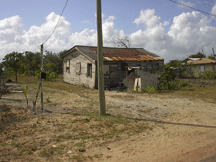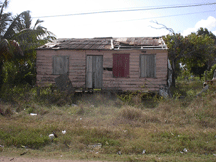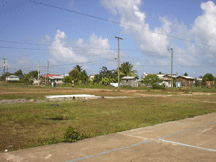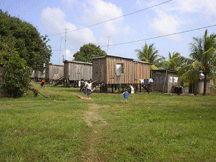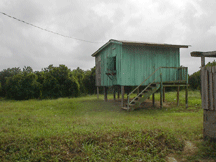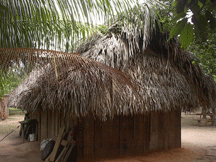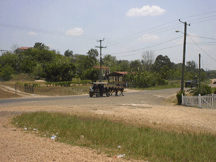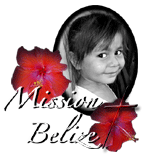

| HOME |
| THE CALL |
| MISSION TRIPS |
| SEINE BIGHT |
| PLACENCIA |
| CONTACT AND SUPPORT |
| TESTIMONY |
| ABOUT BELIZE |
| UPDATE |
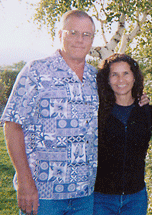
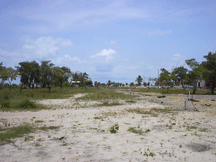
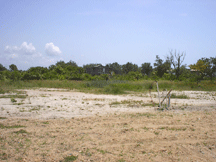
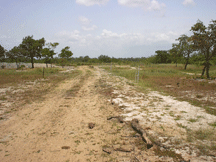
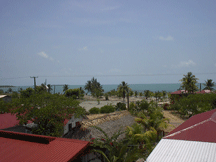
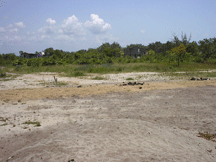

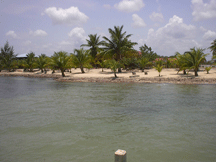


![]()
SEINE BIGHT
Seine Bight is where we are going to live. Pictures on the left side of the page will be our home!!!!! Pictures on the right are of some homes in Seine Bight and then the Banana Plantation and then a Mayan home.... |
SEINE BIGHT
Seine Bight Village is located about 3 miles north of the village of Placencia and stretches about four miles along the Peninsula. Garinagu settled in Seine Bight about the year 1869.
They were led from Riversdale up and down the peninsula for years by Emmanuel "Walpy" Moreira until they finally settled where Seine Bight is NOW. Two other groups followed: John Martinez who settled in the southern area called Santuario, and Mateo Augustine who settled in the northern division called Augustine Ville. Many more came to the village in the 1950's when the Blair Atoll operation, which produced rice & copra, was closed down.
Seine Bight is a Garifuna community, one of just a handful of communities found nowhere else in the world but the Caribbean shores of Belize, Honduras, Guatemala and Nicaragua. The Garifuna are descendants of St. Vincent Island, where indigenous Carib Indians from South America mixed with African slaves who escaped a sinking ship around 1635. These two races merged, blending language and culture into something entirely new - Garifuna. As the Garinagu (plural of Garifuna) continued to resist British imperialism, they were eventually exiled from St. Vincent, and the first Garinagu arrived in Belize in 1802. The early Garinagu of Seine Bight were fishermen who named their village after their favorite tackle, a large fishing net called a "seine." "Bight" is a word used for a depression in the coastline.
A middle-aged, relatively affluent American couple walks the main street corridor of the seaside village of Seine Bight. With raised eyebrows, the woman says: "Look, they live in shacks."
Most of the homes in Seine Bight do resemble shacks. Many are crudely constructed out of salvaged lumber and rusty, corrugated zinc. Out of these small houses, children appear everywhere, seemingly overflowing from the cracks in the makeshift siding.
Their heritage is made up of many and varied complex forms of living manifestations in constant evolution including oral traditions, performing arts, music, festive events, rituals, social practices and knowledge and practices concerning nature."
The Garifuna culture indeed meets the criteria for such an honor. Their "knowledge and practices concerning nature" is wrapped tightly in their fishing nets. Also, the vibrant language, rituals and traditions are uniquely their own. One such ritual practiced by the Garinagu is the dügü which summons ancestral spirits to bring peace and prosperity to their communities.
FROM A LOCAL....
In its attempts to understand the mysteries of our belief system, Western philosophers have coined Sir Edward Burnett Taylor's definition of animism, called it ancestral worship and have likened it to the Yoruba traditions of candomble and Santeria. Whatever truths these theories hold is of little consideration to us in the moments we invoke the guidance, request the approval, honor the traditional practices of and reconnect with our ancestral spirits. You see, my friend, we live in a world our ancestors did not imagine, one for which they could not have prepared us. We live in an age where our subsistence agriculture and fishing, basket weaving, and drum making cannot compete with commercialization and globalization. The simplicity of our traditional lives is constantly challenged by modernization, forcing us to choose a path. Those of us who attempt to keep up the pace may be doing so at the cost of the one treasure entrusted to our care. Those of us who choose our traditional lifestyles, as honorable an endeavor as we have undertaken, face economic realities of marginalization. How do we find the point of intersection between these two parallel and opposing realities? This is the challenge we face daily.
